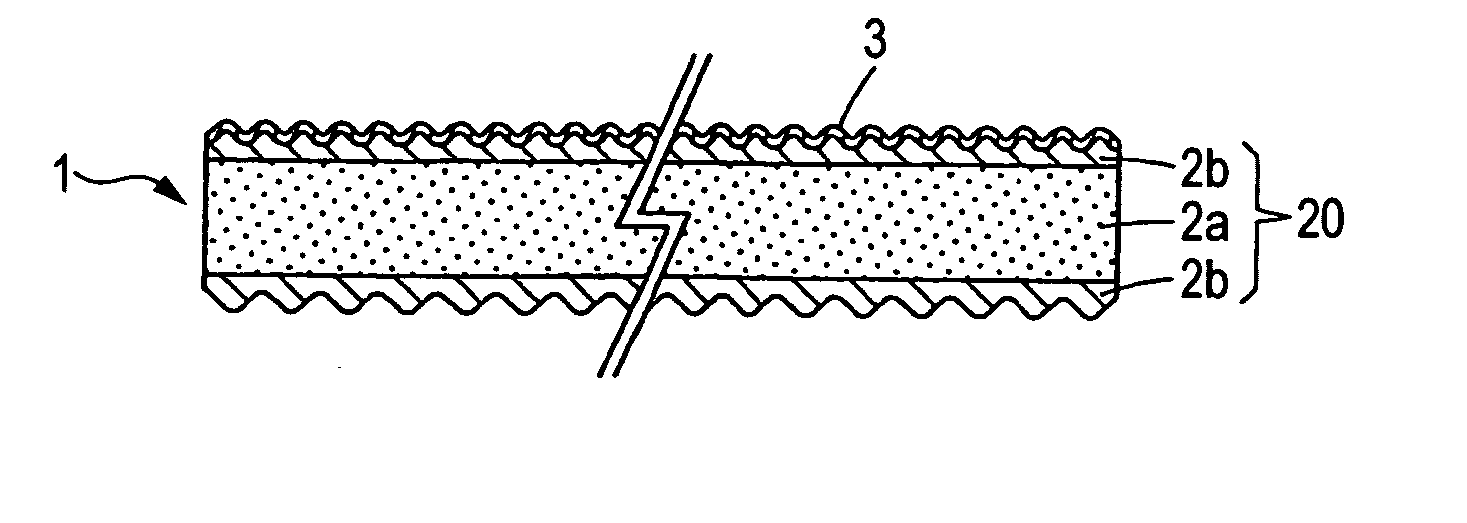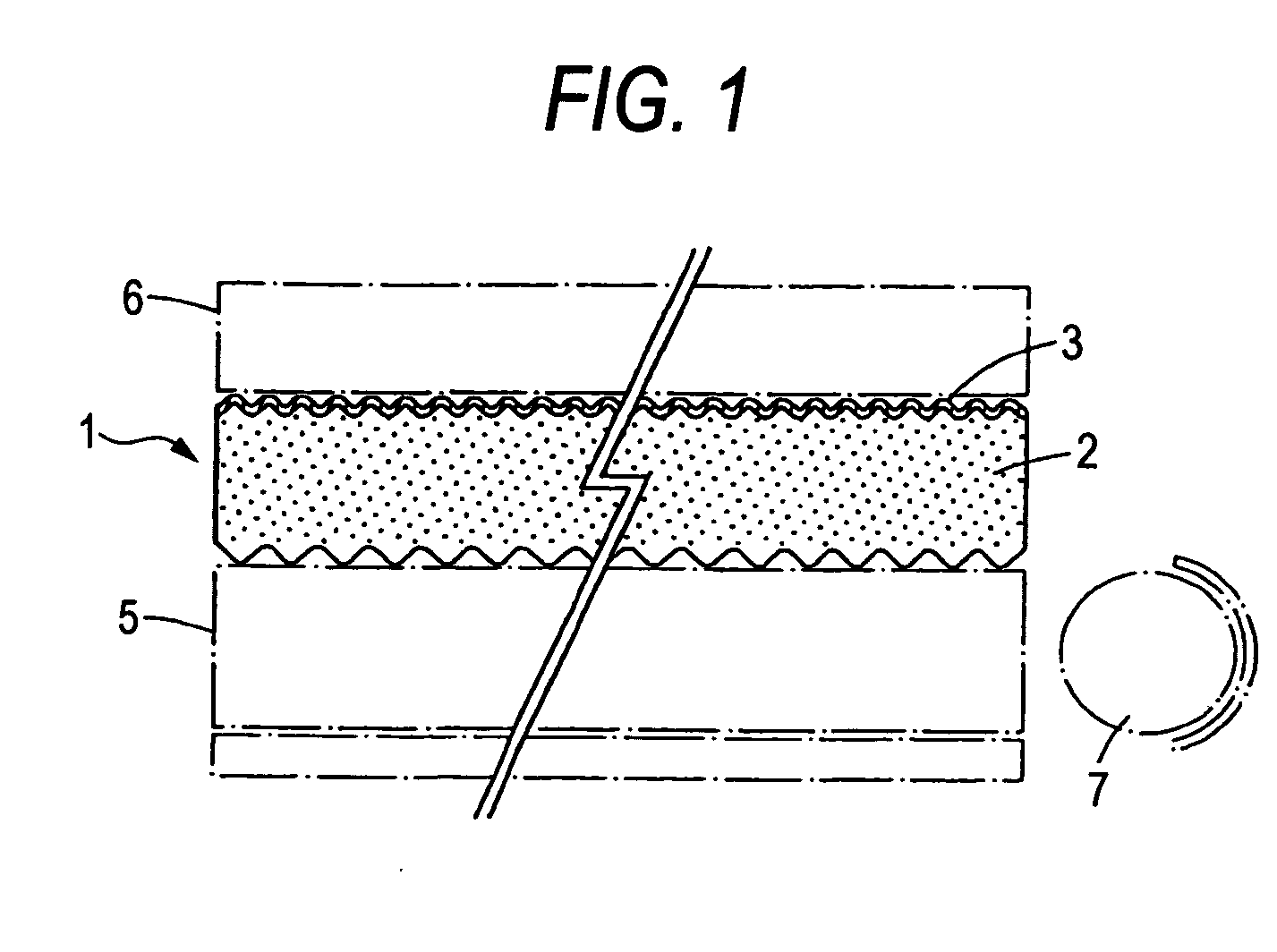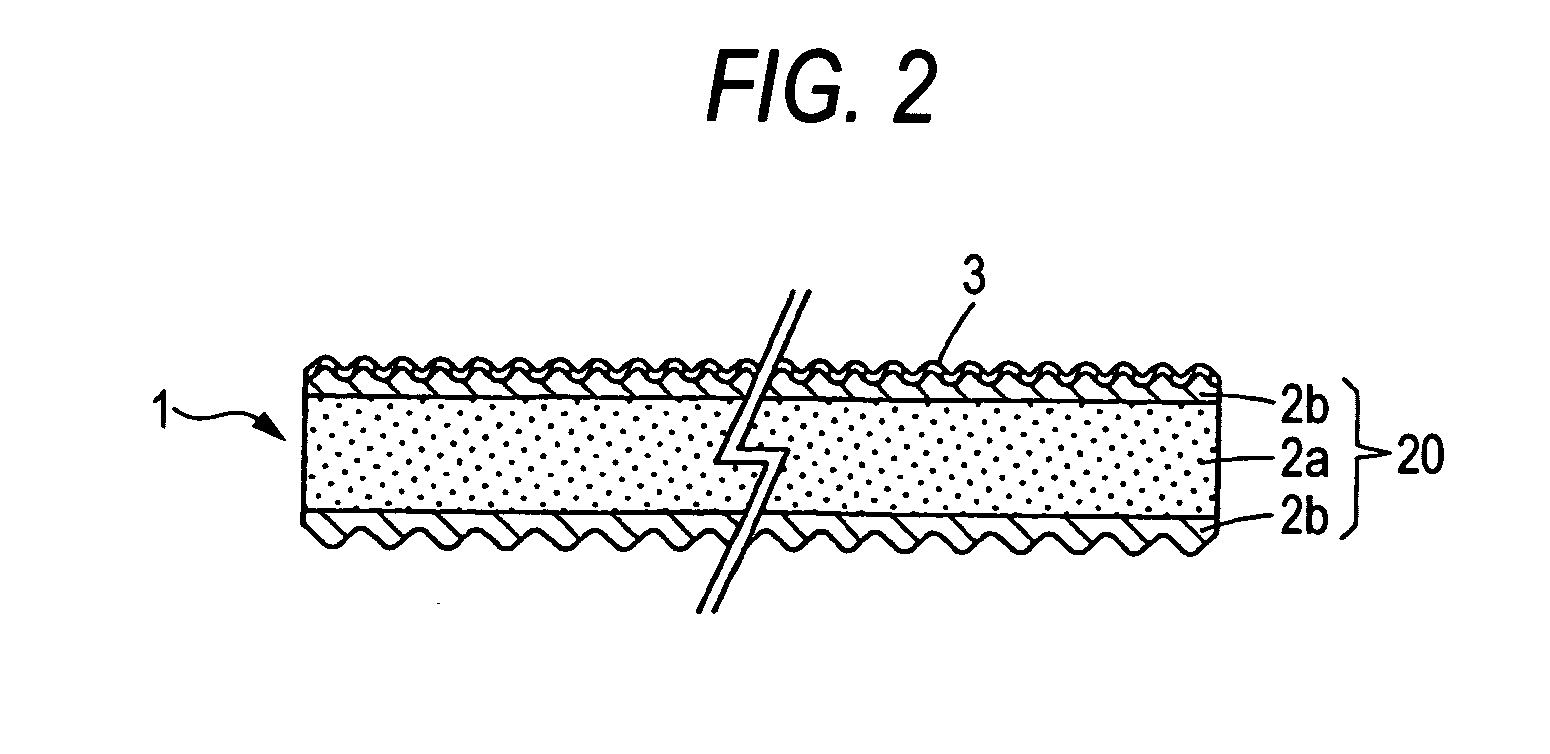Electromagnetic-shielding light-diffusing sheet
a technology of light-diffusing sheet and electro-shielding, which is applied in the field of light-diffusing sheet, can solve the problems of inability to shield from electromagnetic, prone to electrostatics, and light-diffusing sheet, and achieve the effects of improving transparency, satisfying electrical conductivity, and reducing the thickness of the electro-conductive layer
- Summary
- Abstract
- Description
- Claims
- Application Information
AI Technical Summary
Benefits of technology
Problems solved by technology
Method used
Image
Examples
example 1
[0125] Polypropylene containing 30% by mass talc particles having an average particle diameter of 7.2 μm as a light-diffusing agent was extrusion-molded into a single-layer sheet having a thickness of 130 μm to produce a light-diffusing sheet main body.
[0126] On the other hand, single-layer carbon nanotubes (synthesized by the method according to Chemical Physics Letters, 323(2000) pp. 580-585; diameter, 1.3-1.8 nm) and a polyoxyethylene / polyoxypropylene copolymer as a dispersant were added to an isopropyl alcohol / water mixture (proportion, 3:1) as a solvent. The ingredients were evenly mixed and dispersed. Thus, a coating fluid containing the single-layer carbon nanotubes and the dispersant in amounts of 0.003% by mass and 0.05% by mass, respectively, was prepared.
[0127] This coating fluid was coated to one side of the light-diffusing sheet main body and dried. Thereafter, a thermosetting urethane acrylate solution diluted to 1 / 600 with methyl isobutyl ketone was further coated a...
example 2
[0135] An electromagnetic-shielding light-diffusing sheet was produced in the same manner as in Example 1, except that the content of the talc particles as a light-diffusing agent was changed to 25% by mass. This light-diffusing sheet was examined for total light transmittance, haze, luminance, arithmetic mean roughness of each of the upper and lower sides, surface resistivity, and dot-hiding property in the same manners as in Example 1. The results thereof are shown in Table 1. With respect to the electromagnetic shielding properties of the light-diffusing sheet, an examination was omitted because the surface resistivity thereof was almost the same as that in Example 1 and this light-diffusing sheet was thought to have almost the same performance as the electromagnetic-shielding light-diffusing sheet of Example 1.
example 3
[0136] An electromagnetic-shielding light-diffusing sheet having the structure shown in FIG. 2 was obtained in the same manner as in Example 1, except that a light-diffusing sheet main body consisting of a three-layer sheet having a total thickness of 130 μm was produced by using a three-layer coextrusion molding machine to extrude polypropylene containing 21% by mass talc particles into a sheet having a thickness of 112 μm and simultaneously subject polypropylene containing no talc particles to coextrusion therewith so that 9 μm-thick sheets of the latter polypropylene were laminated respectively on the upper and lower sides of that former sheet.
[0137] This light-diffusing sheet was examined for total light transmittance, haze, luminance, arithmetic mean roughness of each of the upper and lower sides, surface resistivity, and dot-hiding property in the same manners as in Example 1. The results thereof are shown in Table 1.
PUM
| Property | Measurement | Unit |
|---|---|---|
| thickness | aaaaa | aaaaa |
| haze | aaaaa | aaaaa |
| total light transmittance | aaaaa | aaaaa |
Abstract
Description
Claims
Application Information
 Login to View More
Login to View More - R&D
- Intellectual Property
- Life Sciences
- Materials
- Tech Scout
- Unparalleled Data Quality
- Higher Quality Content
- 60% Fewer Hallucinations
Browse by: Latest US Patents, China's latest patents, Technical Efficacy Thesaurus, Application Domain, Technology Topic, Popular Technical Reports.
© 2025 PatSnap. All rights reserved.Legal|Privacy policy|Modern Slavery Act Transparency Statement|Sitemap|About US| Contact US: help@patsnap.com



